How to transplant currants in a new place in the spring?
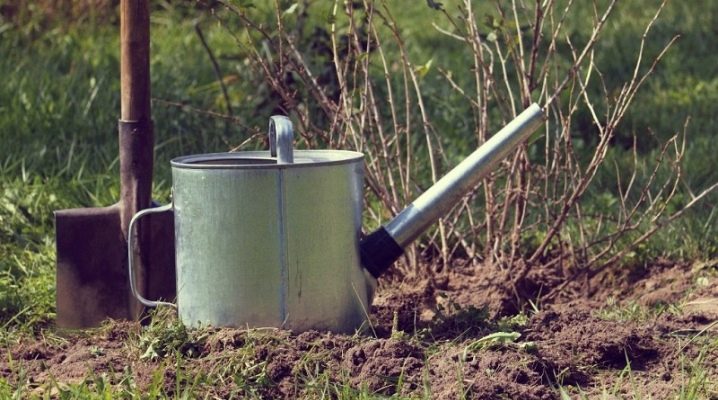
It is better not to move bushes of fruit plants. Even with the most sophisticated technique, this will lead to short-term losses in yield. But sometimes you can't do without a transplant. Consider how to transplant currants in the spring to a new place as painlessly as possible

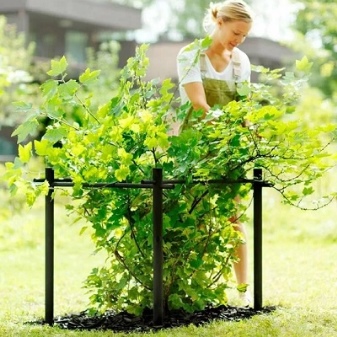
The need for a procedure
Currants feel good in one place up to 15 years. A transplant is necessary only in one case - the shrub has grown too much, has grown old and needs radical rejuvenation, it needs to be divided and new planting material obtained or thinned out. Also, old bushes can begin to interfere with each other - the harvest is shallow. All other reasons can be attributed to organizational and dependent only on the gardener:
- redevelopment of the site;
- a bush interferes with other plants or plants interfere with a bush;
- the conditions for good fruiting have changed - a shadow, wind, groundwater have appeared.
The transplant tolerance for currants is very high, but the plant will be injured. The older the bush, the longer it will take to adapt. Good care fully compensates for these difficulties.
Bushes under 5 years old can be transplanted in case of emergency, even in summer.

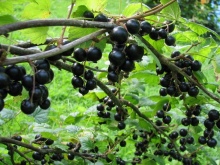
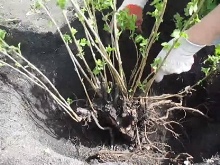
When can you transplant?
The spring transplant takes place at the end of March - in April. Specific dates are chosen according to the circumstances. You should be guided by the conditions in your region: the soil thawed enough for digging, and the juice has not yet begun to move, the buds have not swollen. In the Moscow region it is March, in Siberia - May, in the South of Russia - March. Transplanted when establishing a stable air temperature of 0-1 ° C.
Before the start of sap flow, with dormant buds, all shrubs and trees are transplanted in the spring. Such plants have plastic, but dense and inactive roots, and the ground part does not require nutrition. The plant will not lose too many small roots, and the unfolding foliage will not be deprived of nutrition. Cons of a spring transplant: it is difficult to catch a period when the earth has warmed up enough and the buds have not started to grow, a double load on the plant - it has to direct its forces both to take root and to build up green mass. But the pluses compensate for this - before winter, the plants take root well, some varieties will yield a harvest in the same year. Spring transplanting is preferable for cold regions with unstable, cold autumn and early frost.
Note. Transplanting in the fall is performed more often because there are few other works in the garden. The plant is at the peak of its strength, during the season it has prepared for sleep, the leaves have been shed and there is no risk that they will start growing in the coming days. The currants are transplanted a month before persistent cold weather. In some cases, you can transplant a bush in the summer, even with leaves. The plant will take root, but will need intense help. To minimize damage, it is best to wait until fruiting ends.
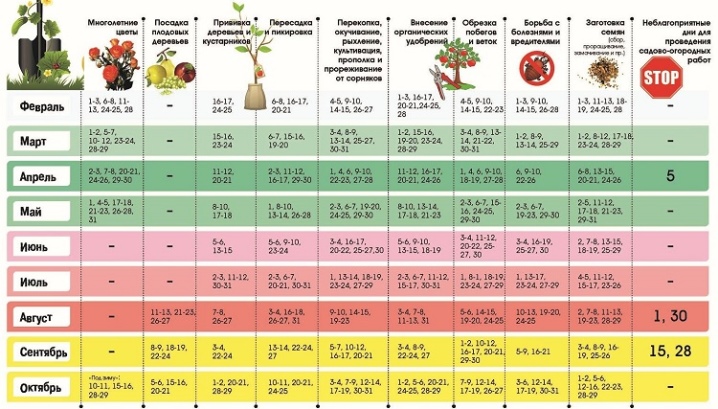
Preparation
Preparatory activities include:
- thorough watering of the bush before transplanting;
- pruning dry, damaged branches;
- healthy branches are thinned and shortened by ½ the length;
- prepare strong burlap, polyethylene for carrying the bush (if the bush is planned to be transported far, you will also need a bucket of water).
The planting site should be well lit, ideal if there is light shade. The site is preferable to be calm, protected by buildings or taller plants.However, you need to maintain a distance from other plantings with trees or bushes. not less than 2-3 meters, so that the roots of large-sized trees do not interfere with each other.
Currants love abundant moisture, but do not welcome stagnant water. Low-lying areas and areas where groundwater lies closer than 2 m should be avoided. Places on higher elevations are also not suitable - there the plant will constantly lack moisture.
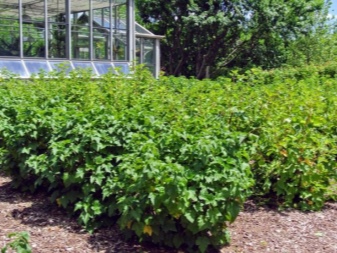

Bad neighbors for currants.
- Pine and other conifers. They spread goblet rust, plantings will often hurt. And they acidify the soil, which the currants cannot stand.
- Birch... Oppresses all plants, taking all moisture from the soil.
- Raspberries... Has a deeper root system, deprives the currant of nutrition.
- Cherry... It wilts next to black currants, which actively absorb moisture from the soil.
- Plum... Common pests with currants.
Useful neighbors for currants:
- honeysuckle;
- Strawberry;
- garlic;
- onion;
- Apple tree.
Do not plant red and black currants next to it. They have different needs.

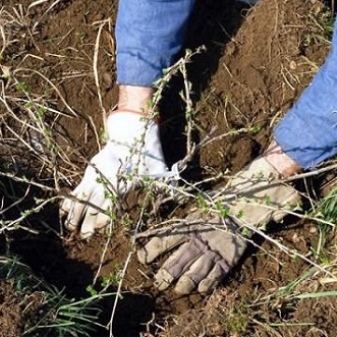
Priming
The best soil types are sandy loam or loam. The soil must have good mechanical properties: it is effective for moisture and air to pass through. To increase moisture and air permeability, sand, peat or compost is added.
Currants have a superficial root system, therefore you need to prepare not only the pits, but the entire site... It is dug up onto two bayonets of a shovel, the bottom layer is loosened, organic and mineral fertilizers are applied, as for any other plants. If the soil is too acidic, lime it or adjust the balance with ash. Currants need a pH of 6–6.5. Planting holes for currants - 30-50 cm deep, 60-100 cm wide.
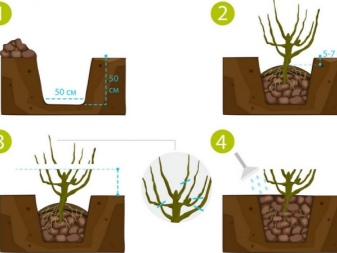
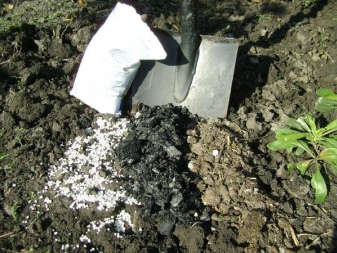
Digging out a bush
To dig a bush, it is first dug in at a distance of 30 cm from the trunk. Depth - 1-2 shovel bayonets. Pry the bush with a shovel on one side, slightly raise it. Then, on the other, they pry harder, pulling out the roots with a lump of earth. The plant should be lifted with a shovel or pitchfork. It is not worth pulling for the branches themselves - they may break.
If it is planned to shake off the ground, the roots should be examined and disinfected with a weak solution of potassium permanganate.
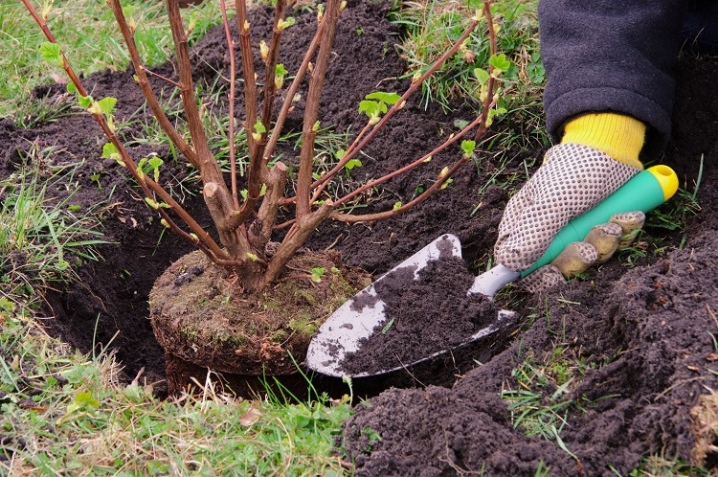
Transplant technology
The sequence of activities for transplanting currants.
- Digging holes... If you want to transplant the currants to a new place in the spring, 2 weeks after digging, you do not need to add fertilizers to the holes. If the site was dug up and fertilized in the fall, and the transplant is carried out in the spring, then the holes must be dug out in advance, the soil removed from them must be mixed with compost.
- Immediately before planting, 1-3 buckets of water are poured into the holes - so that at the bottom of the pit the soil looks almost liquid. If the bush is planted without a clod of earth, the bottom of the pit is watered moderately, a mound is poured below from part of the removed soil.
- The roots of the seedling can be dipped in a solution of wood ash - 100 g of ash per 5 liters of water.
- The dug out currant bush together with a lump of earth is placed in a hole, sprinkled with prepared soil... If this is a bush without a coma, it is placed on a mound, shaking slightly, gradually covered with soil from all sides. The soil is compacted tightly every 5-10 cm.
- The trunk circle is spilled abundantly, spending at least 3 buckets of water per bush.
- The soil from above is mulched with peat, pine needles or dry compost.
The root collar of currants, in contrast to apple trees or pears, is deepened by 8-10 cm. The root collar is located 3-4 cm above the lateral root. Correct penetration stimulates the emergence of new roots.
Note. There is a special technique carried out in the spring in order to even more successfully transplant adult currants to another place in the fall - the bush is deeply dug in with a shovel at the right distance, chopping off all large roots.
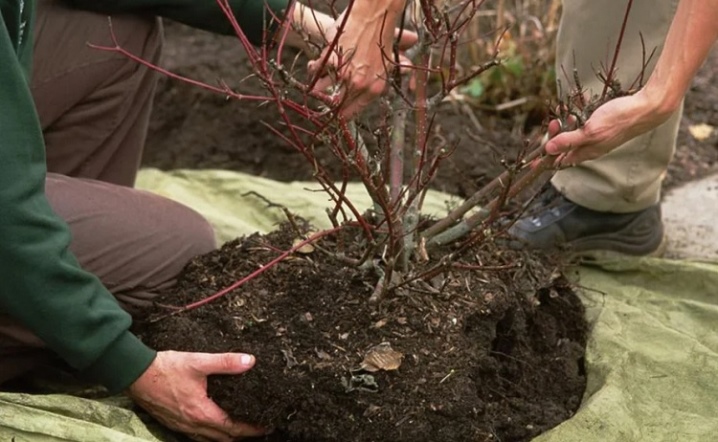
Over the summer, more small roots are formed within the soil coma. In the fall, the lump is taken out and moved to a new place. But one can argue how necessary it is. Currants do not belong to plants that are too demanding for transplanting, additional tricks are usually not required.
After the transplant, the following actions will be required.
- Abundant attentive watering. You cannot overdo it - this provokes diseases and can destroy the plant. But the lack of moisture will also have a negative effect. A young plant will perceive even a short-term drying out of the soil as a reason to stop growing. Consideration should be given to the weather and soil composition. Loam is watered less often, sandy loam - more often. In very dry weather, black currants are watered at least 2-3 times a week, and red and white - up to 3-4 times.
- Additional pruning of branches, if there is a suspicion that the underground and the upper part after the previous cut are not in balance.
- Carry out treatment against pests and diseases (spider and fruit mites, glass, scabbard, mealy growth, anthracnose, etc.). Before the buds dissolve, they are sprayed with 1% beard mixture, the leaves that have begun to bloom are treated with Fitoverm.
- In autumn, plants are treated with a solution of ferrous sulfate (5%), copper sulfate (3%), preparations "Fitosporin", "Aktellik", "Horus". Wood ash can also protect from powdery mildew - 1 glass is scattered around the trunk circle and loosened (not combined with nitrogenous fertilizers).
- For the winter currants harbor only in regions with cold, snowless winters (below -25 ° C).
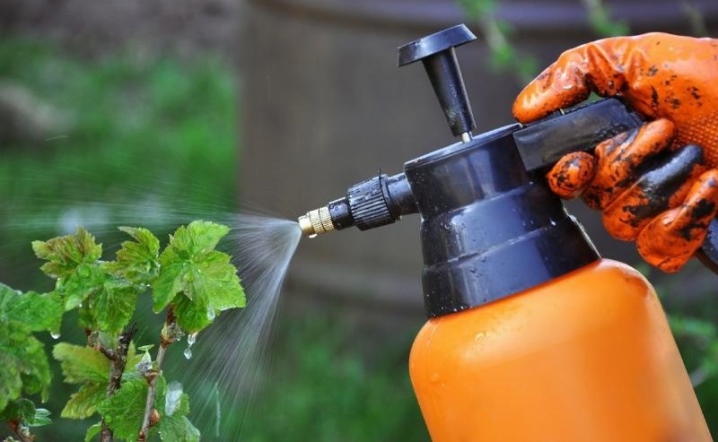
Common mistakes
- The age of the bush is not taken into account. It is better not to shake off a lump of earth in mature healthy bushes. Old plants are divided into several, strongly cut off, the soil is shaken off from the roots, the roots are examined, damaged and blackened ones are removed. Young ones can be transplanted in any way. If the old bush is depleted, you do not need to divide it, it is better to just remove the excess.
- The type of currant is not taken into account... The black currant has a superficial root system, it is easier to dig it up and move it without damage, but after planting it will need more careful watering - the soil can dry out quickly. Black currants are watered more often, and not so abundantly. Red and white currants have a deeper root system - they are watered a little less often, but more water is used.
- Excess fertilizer. Excessive zeal in this matter can be detrimental to the plant. In the first 2 years, it is better not to feed the transplanted bushes, everything you need has already been introduced into the soil.
When transplanting, all branches are cut off only with a clean pruner, the cuts are treated with garden pitch. If the branches accidentally break off, you also need to make an even cut and carry out processing. Mature strong bushes transplanted in spring can produce crops in the same summer. However, in most cases, you should not wait for berries so quickly. Even a perfect fit and aftercare won't speed up time.
It will take about a year for the plant to recover. The first fruits can be removed next season.
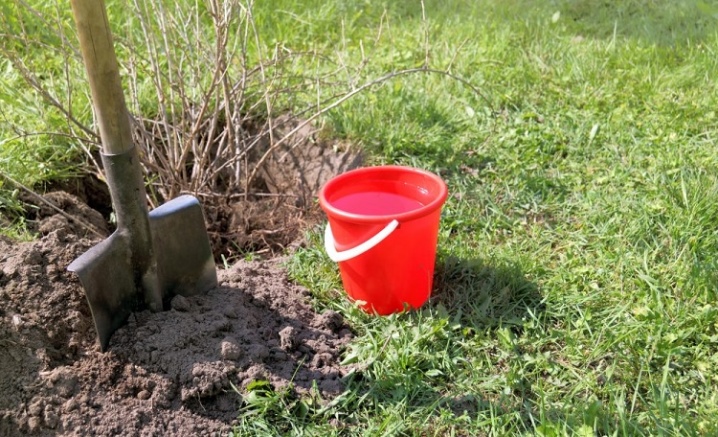













The comment was sent successfully.